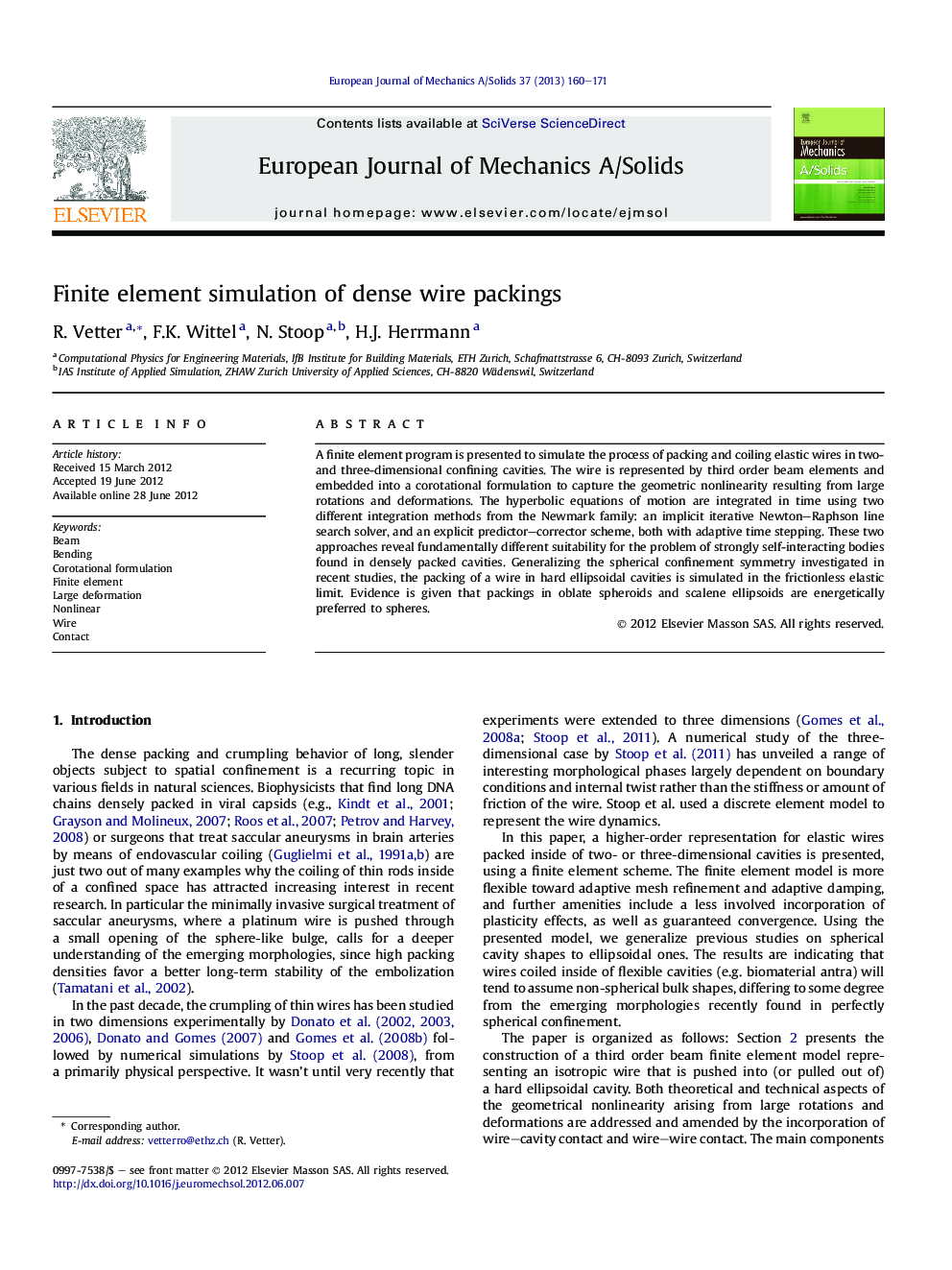| Article ID | Journal | Published Year | Pages | File Type |
|---|---|---|---|---|
| 778027 | European Journal of Mechanics - A/Solids | 2013 | 12 Pages |
A finite element program is presented to simulate the process of packing and coiling elastic wires in two- and three-dimensional confining cavities. The wire is represented by third order beam elements and embedded into a corotational formulation to capture the geometric nonlinearity resulting from large rotations and deformations. The hyperbolic equations of motion are integrated in time using two different integration methods from the Newmark family: an implicit iterative Newton–Raphson line search solver, and an explicit predictor–corrector scheme, both with adaptive time stepping. These two approaches reveal fundamentally different suitability for the problem of strongly self-interacting bodies found in densely packed cavities. Generalizing the spherical confinement symmetry investigated in recent studies, the packing of a wire in hard ellipsoidal cavities is simulated in the frictionless elastic limit. Evidence is given that packings in oblate spheroids and scalene ellipsoids are energetically preferred to spheres.
► A third-order finite element representation for dense wire packings is given. ► Densely packed contacting wires require explicit integration in time for efficiency. ► Different ellipsoidal cavities are packed, revealing different energetics. ► Oblate and scalene packings are energetically preferable to spheres and prolates.
